I was quite surprised when a friends daughter asked me if i knew what the National Tree of the Bahamas was. Ofcourse I knew but her next question kinda stomped me for a moment which was why. So I got to doing some researh on the topic and the information was not easy to find.
The Lignum Vitae is the National Tree of the Bahamas, and its Latin name is Guaiacum Sanctum. This little nuggets of information is very important to know.
Which Lignum Vitae?
Although it may seem straight forward to know the name of the Bahamas national tree, its not so black and white. There are two varieties of lignum vitae that are often confused by many. Guaiacum officinale and Guaiacum sanctum are both known as lignum vitae but they have their differences.
Guaiacum Officinale is known throughout the Caribbean region specifically in Jamaica. This is because the flower that the plant produces is actually the National Flower of Jamaica. This species differs slightly from the Bahamian National tree, The Guaiacum Sanctum.
Let me explain…
Lignum Vitae vs Lignum Vitae
In case you did not know, different countries have different names for the same tree. The Lignum Vitae has general names such as;
- Guayacan – Puerto Rico
- Bois Siant – Haiti
- Palo Santo – Cuba
- Lignum Vitae – The Bahamas
As diverse as the Caribbean is the names of the Lignum Vitae follows with that diversity. The changes in the native name is believed to originate based on the uses and beliefs that each country had surrounding the tree.

Guaiacum Officinale Photo by Jayesh Patil – Flickr Tree of Life 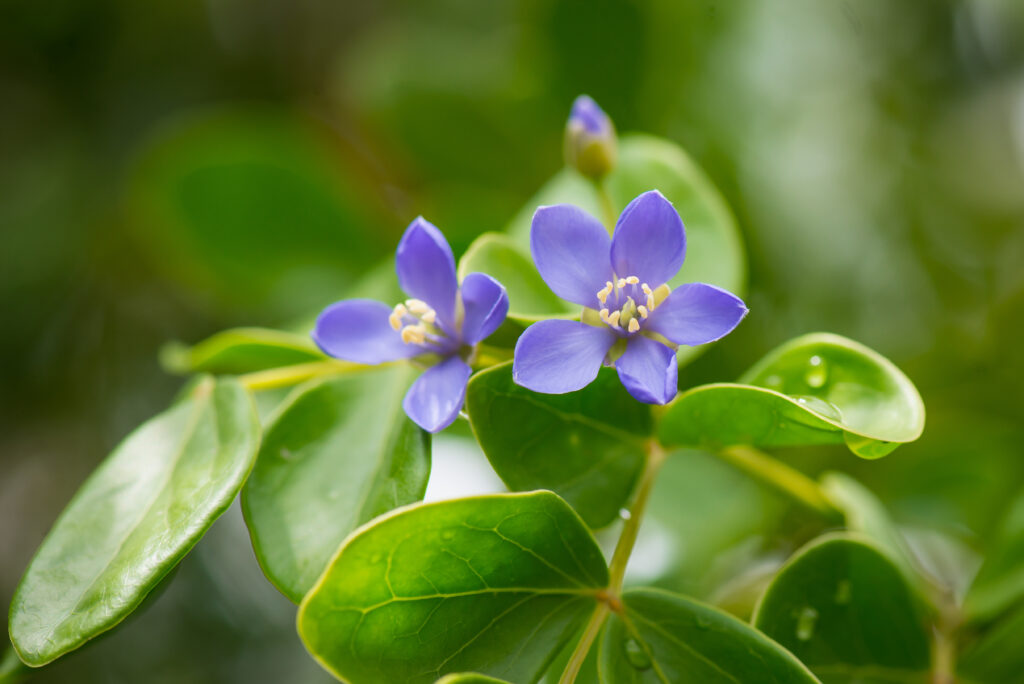
Guaiacum Sanctum
Differences
The difference lies in the subtle changes from plant to plant mainly on the petals of the flower. The guaiacum officinale (we will call it the Jamaican Lignum Vitae) petals are different from the guaiacum sactum (we will call it the Bahamian Lignum Vitae)
| Guaiacum sanctum | Guaiacum Officinale |
|---|---|
| Leaves are rounded | leaves have a point |
| Flower petals remain purple | Flower petals turns silver blue |
| Fruit has 5 winged tips | Fruit has 2 winged tips |
| Name infers sacredness | Names infers medicine |
The Jamaican lignum vitae petals will turn a greyish almost sliver blue color after fruit has matured. The Bahamian lignum vitae petals will remain the bluish purple color year round.
The fruit of the Jamaican lignum vitae have two wing tips while the Bahamian lignum vitae fruit has five. Its a difference you have to get close to appreciate.
Lastly the name tells even more about the two plants.
Officinale according to wikipedia – is a Medieval Latin epithet denoting organisms – mainly plants – with uses in medicine and herbalism. It commonly occurs as a specific epithet – the second term of a two-part botanical name
Sactum according to Merriam dictionary – a sacred place or a place where one is free from intrusion.
What does it all mean?
Without boring you with the etymology behind the names the short answer is that one was named based on its medicinal properties while the other was considered sacred plant. Over time it was found out that both hold medicinal properties and both were revered as sacred plants.
Now you know that there are two varieties of the lignum vitae plant lets explore the Bahamas national tree the Guaiacum Sanctum.
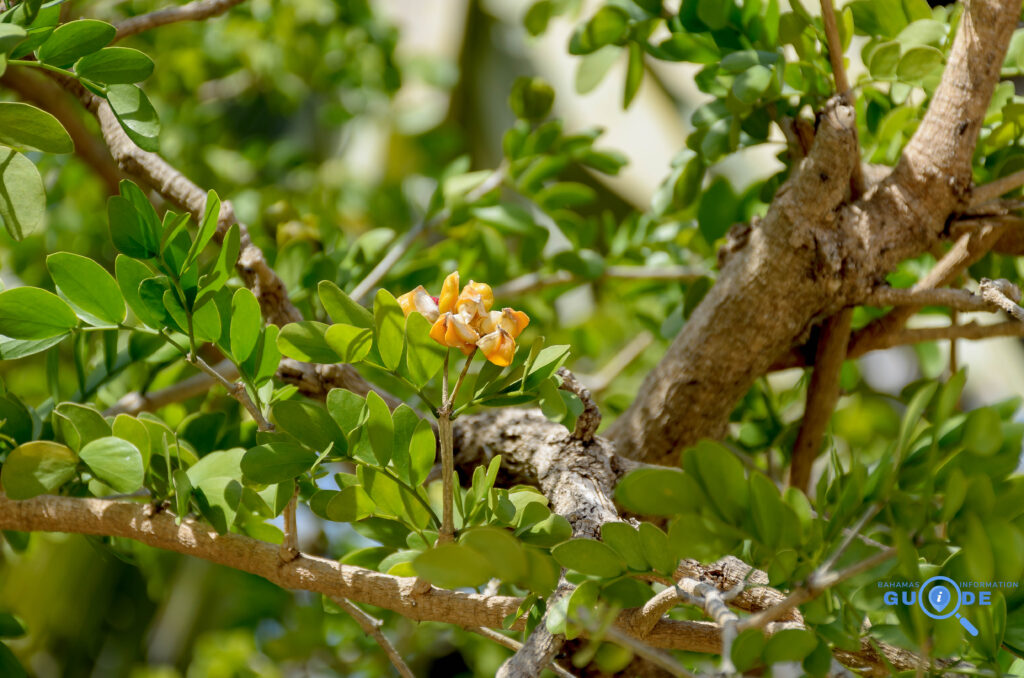
Lignum Vitae Identification – Guaiacum sanctum
Not only is the Lignum Vitae the National Tree of the Bahamas but its name alone is Latin for Tree of Life, some translations call it the Wood of life. Every part of this amazing tree is said to be used one way or the other for medicinal purposes and industry. The leaves, flowers, bark, wood all were once used to treat one ailment or the other or in the case of the wood itself, was used in development various industries and sports.
The Tree

The tree can grow up to 30-40 feet but because it is so slow growing most persons will only see a tree at about 7-15 feet tall. If at all.
The slow growth also means that if you do see a fully grown tree, its probably well over 100 years old.
A young tree often may be seen with multiple trunks that branch out in various directions but its all to help with its slow growth rate.
The tree can grow with multiple trunks however tender of the tree can prune the tree from a young age to grow with just one main trunk and many branches as it matures.
This look is most preferable for persons who may want to grow this amazing plant in their own back yard. Just remember it will outlive you so make sure you pass on your knowledge to your children and your grand children.
The flower

The budding flower of the Lignum Vitae is a purplish lavender color but most scientist may argue that it is a shade of blue. It blooms virtually year round and also produces a small fleshy fruit from its center.
The petals when fully in bloom are a magnificent sight to behold, although they are only about the size of a Bahamian dime. A fully blooming tree can make them all seem so much more larger.
The flower itself has
- 5 Petals
- 5 Sepals
- up to 10-15 Stamens
The Leaves
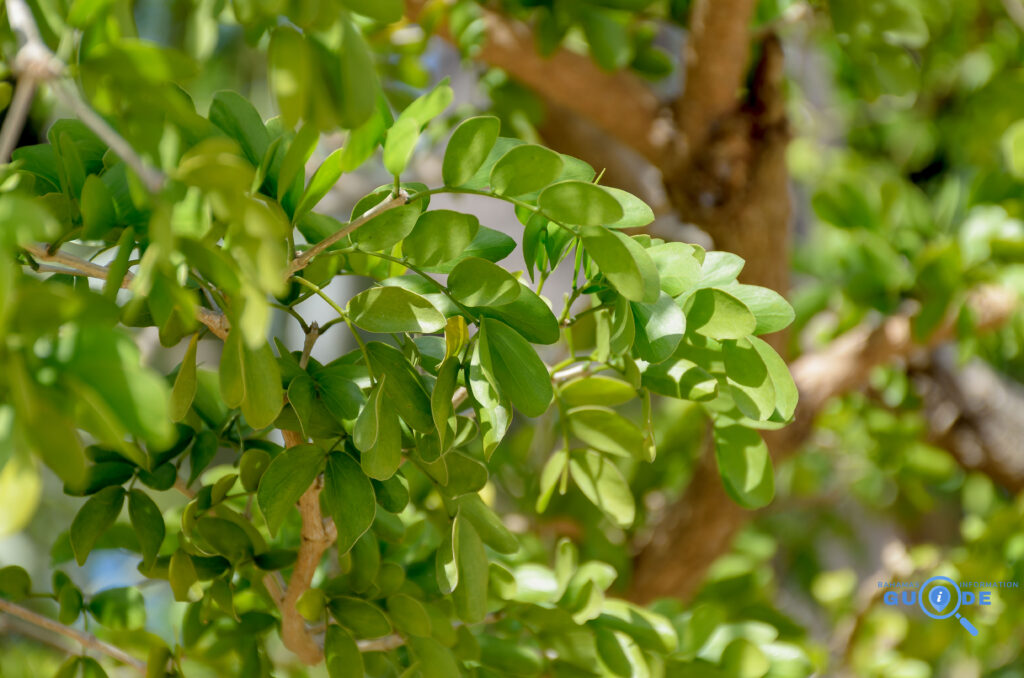
The leaves of the ligum vitae are arranged on opposite sides of each other and can be seen with 3-5 rows of leaves on each stem.
The shape of the leaves are an oval, oblong shape with a smooth curve at the tip of the leaf.
The most notable point of the leaves is that they are evergreen. They do not change color nor does the tree shed the leaves throughout the seasons.
The medicinal uses for the leaves are as follows
- Respiratory treatment
- Inflammation
- Congestion
- Neurological disorders
The Bark

The bark of the lignum vitae varies as it grows. A young tree will have an almost beige color to the bark and it is very flexible at this stage.
As the tree matures the bark itself begins to change color from the beige tone to a darker more textured bark that many are used to seeing on the tree.
A fully matured tree can sometimes loose its bark but typically it will remain a thick coating for the trunk of the tree while the limbs may vary in color.
The Bark of the ligum vitae has medicinal uses such as assisting with
- Sprains
- Strains
- Arthritis
- Rheumatism
The Wood
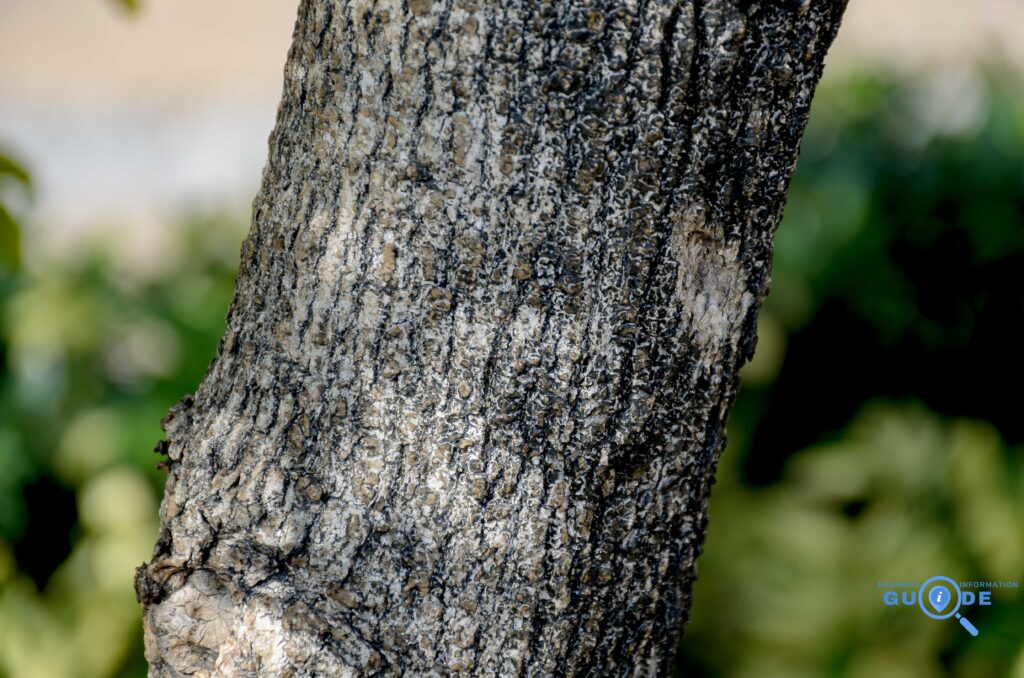
One other amazing fact about the Lignum Vitae is that it is one of the few hard woods that is self lubricating thus it has been used in water lubricated shaft bearings for ships and hydroelectric power plants.
The uses for this iron wood throughout the ages have been from as simple as making cricket bails and croquet mallets to being used as canon mortar and ballets for wood carvers.
This tree got its name because it has so many life restoring properties, the resin or ‘sap’ as Bahamians call it, has been used throughout the ages to treat ailments such as the
- Common cough
- Arthritis.
- As a Laxitive
- Asthama
Besides the medicinal uses for the wood it would be useless to mention it if its practicality in modern industry was not also mentioned.
The wood is so hard that they survived the 1906 earthquake and subsequent fires of San Francisco and many lasted until the 1970’s with a few that made it to the new millennium which made most of them last between 60 and 90 years.
The most interesting usage for the wood was as the gears in pendulum clocks and another little interesting fact, The British used the wood to make the truncheons (billy or baton) used by their bobby (British police officer).
An even better example are the insulators used by the San Francisco Railroad company.
These insulators were used to support feeder wires for the trolley systems around the city from 1904. Because the wood can withstand high stress and heat that is generated when the trolleys turned corners it was installed for safety reasons.
Properties
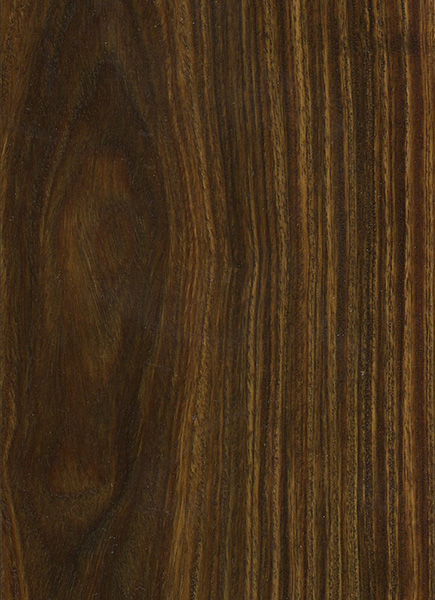
The Lignum Vitae wood is so hard it is listed as one of the hardest woods in the world. On the Janka Scale of wood hardness the lignum rates at 4500lbf.
The closest wood hardness or density to the Lignum is the African Blackwood which is rated at 2940lbf and next in line Hickory at 1820lbf, there is no comparison in fact the Lignum Vitae is so hard its often referred to as ‘iron wood’ it literally will sink in water.
The only wood that may be harder than Lignum wood is the Australian Buloke. What makes the ligum stand out however is it high concentration of natural oil. The oil literally makes the wood water proof.
Locations
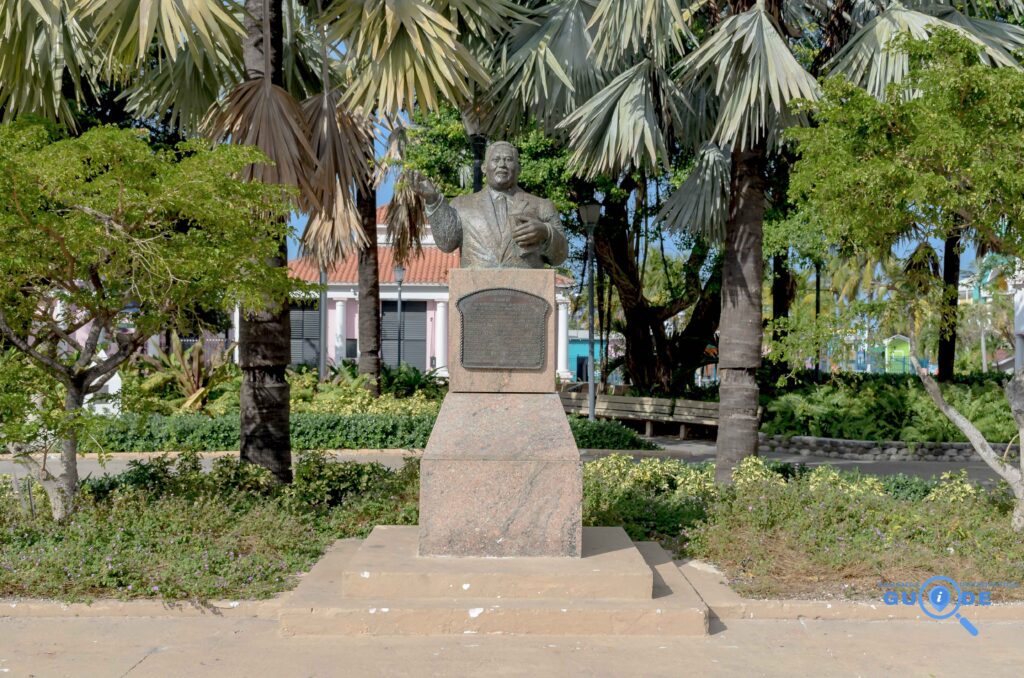
If you have never seen the tree before then you may like to know that there are two trees on either side of the Sir Milo Butler Statue in Rawson Square Down town Nassau.
A fully grown tree is often hard to find on the island of New Providence but if you are willing to walk through the forest of the islands a few can still be found fully grown.
Read more about the National Flora and Fauna of the Bahamas by taking a look at The Bahamas National Fish, The Bahamas National Flower and The Bahamas National Bird.
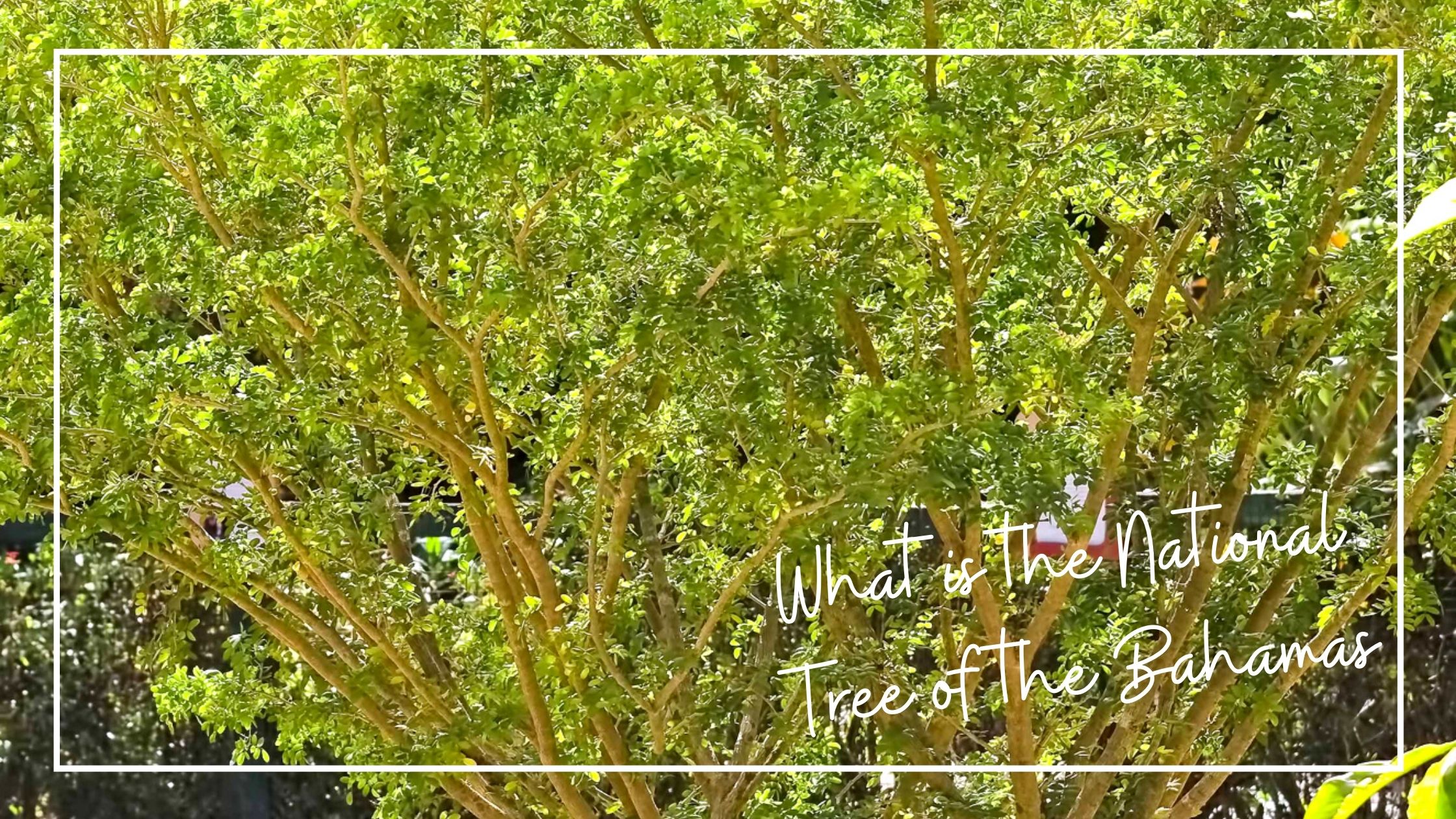
One thought on “What is the National Tree of the Bahamas?”
Comments are closed.